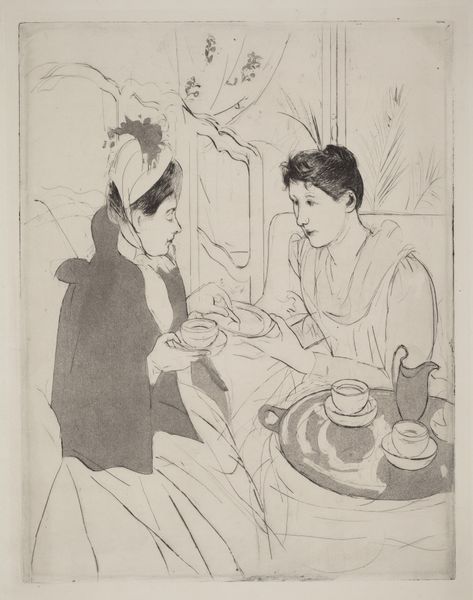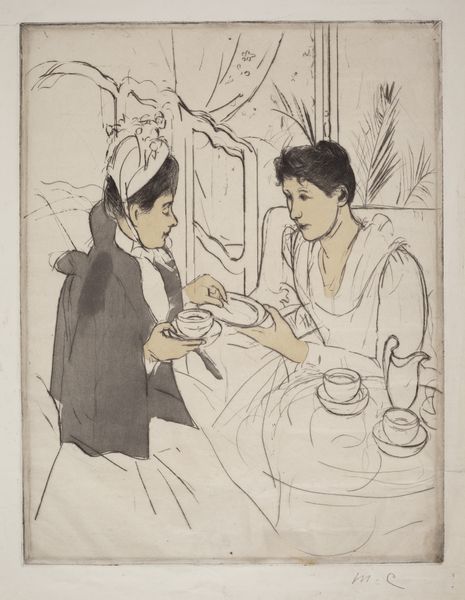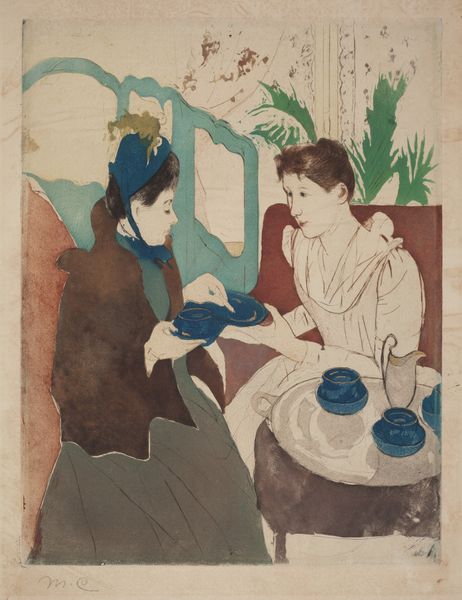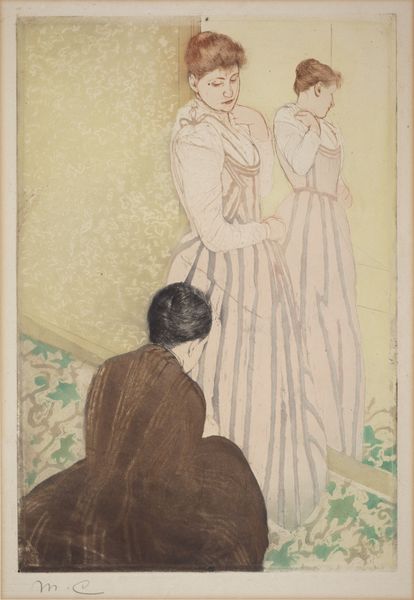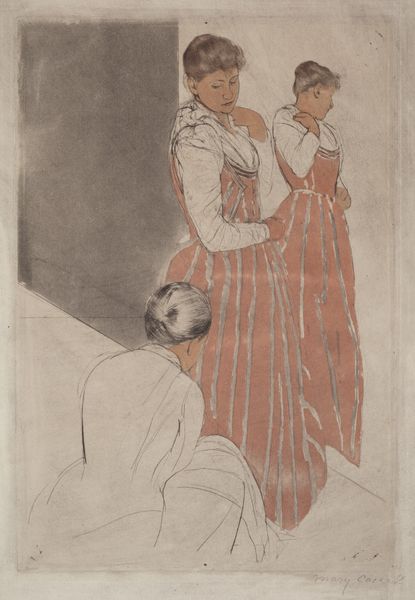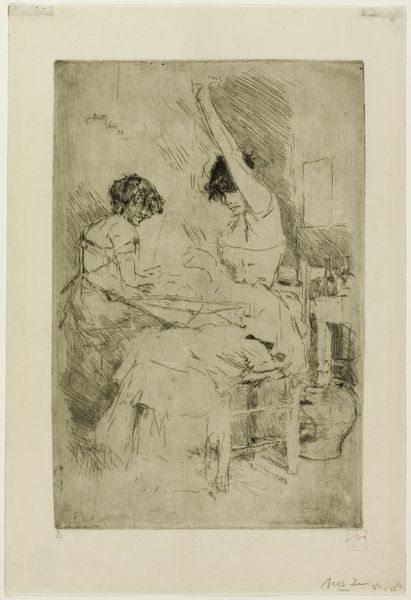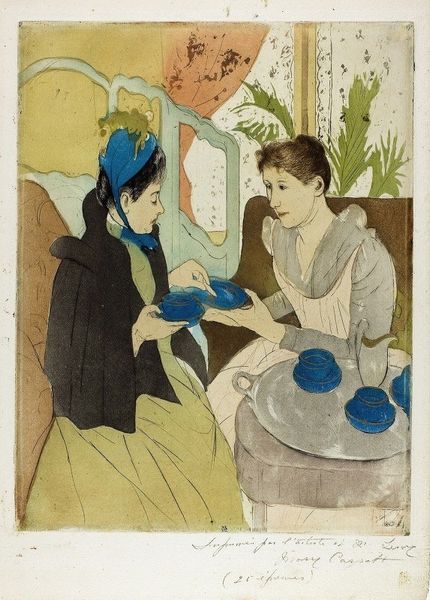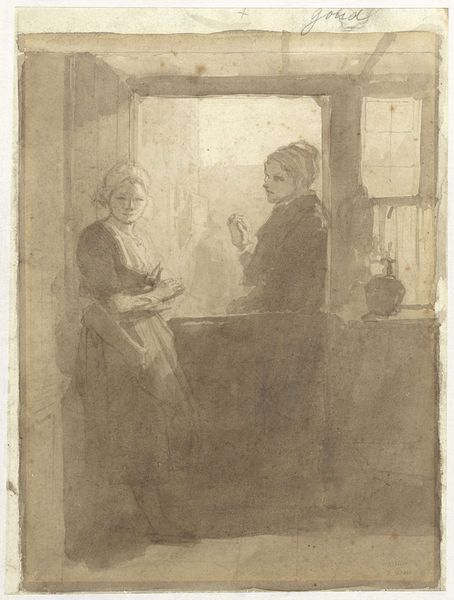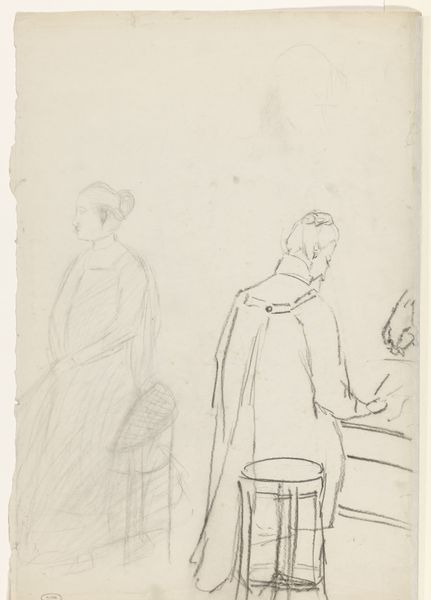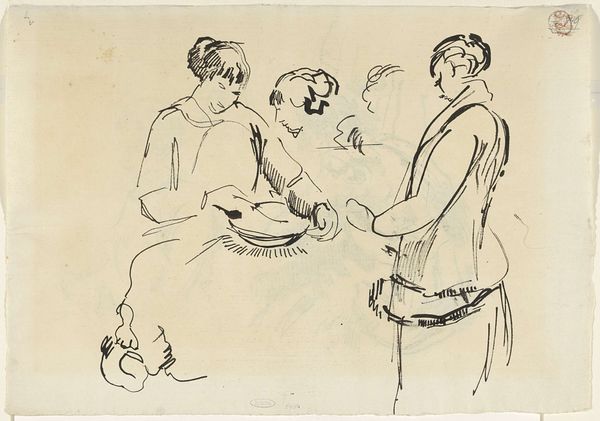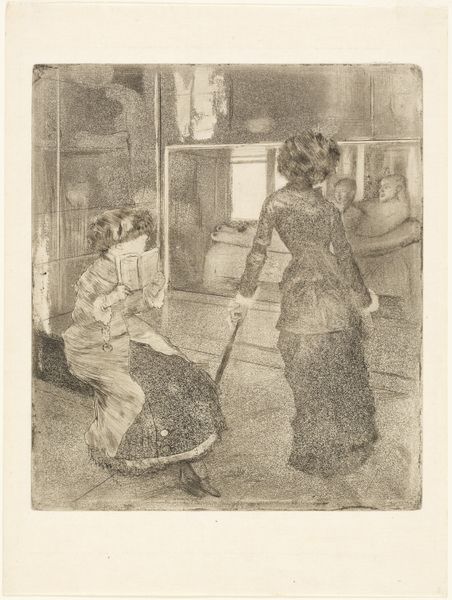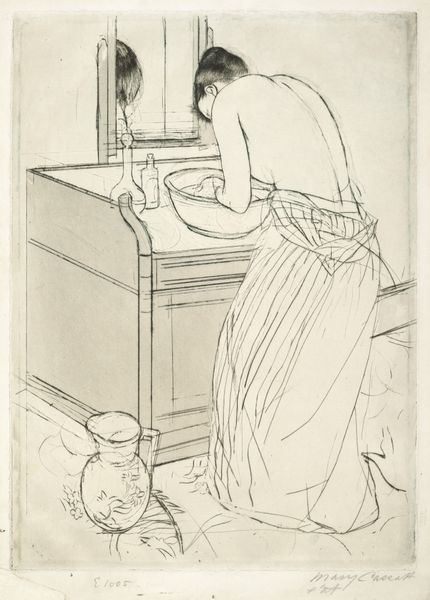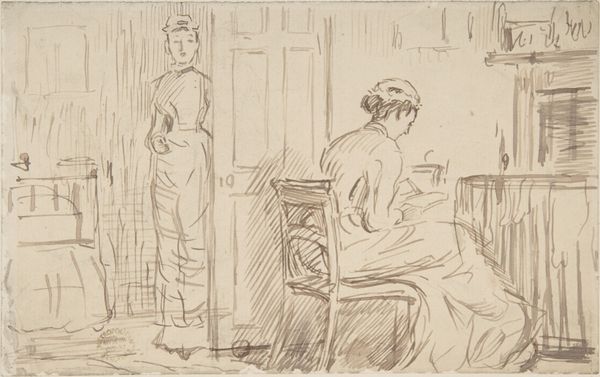
drawing, print
#
portrait
#
drawing
# print
#
impressionism
#
pencil sketch
#
pencil drawing
#
intimism
#
group-portraits
#
watercolor
Dimensions: plate: 34.77 × 26.35 cm (13 11/16 × 10 3/8 in.)
Copyright: National Gallery of Art: CC0 1.0
Curator: Here we have Mary Cassatt’s "Afternoon Tea Party," created between 1890 and 1891. It's a captivating print showcasing her impressionistic style. Editor: It’s surprisingly understated, isn’t it? Almost a sketch. I immediately notice the texture, how the pencil work creates such subtle shifts in light. It’s quite delicate for depicting what one imagines were rather rigid social rituals. Curator: Cassatt was particularly interested in portraying the social lives of women in the late 19th century. These tea parties were central to women's social circles, spaces for networking and forging relationships. Yet they were carefully managed spaces adhering to social decorum. Editor: And you see that restraint reflected, I think, in her choice of materials. It appears primarily as pencil and watercolor? The paper itself is part of the effect; it’s not fighting for attention. What intrigues me is how the simplicity almost domesticates the grand tradition of portraiture itself. Curator: Precisely. Cassatt frequently depicted domestic scenes and challenged the established artistic hierarchy. Women, as both subject and audience, were often dismissed, and these "minor" activities deemed unworthy of serious artistic attention. Her art subtly advocates for the acknowledgement of women’s experiences as inherently significant. Editor: Absolutely. Considering this was a print, designed for reproduction, the materials underscore the point. It makes art accessible and maybe even suggests that the everyday lives of women are worthy of distribution and wider acknowledgment. Were prints of these sorts commonly sold at the time? Curator: Yes, the accessibility of printmaking allowed for a broader distribution of art, influencing social perceptions and attitudes about gender. By focusing on the seemingly mundane details of domestic life, Cassatt elevated them to subjects of artistic merit. This disrupted the male-dominated art world and offered women agency within it. Editor: It almost reads like a quiet rebellion. There is a great deal being telegraphed through her artistic choices. One might almost miss the point were it done up in heavy oil paints. Curator: It is in effect a quietly powerful statement about the value of female companionship and experiences, which, I find, challenges historical neglect. Editor: A wonderfully understated revolution executed in pencil and tea. Curator: Indeed, a subtle yet potent glimpse into the world of women and their carefully crafted social circles.
Comments
No comments
Be the first to comment and join the conversation on the ultimate creative platform.
